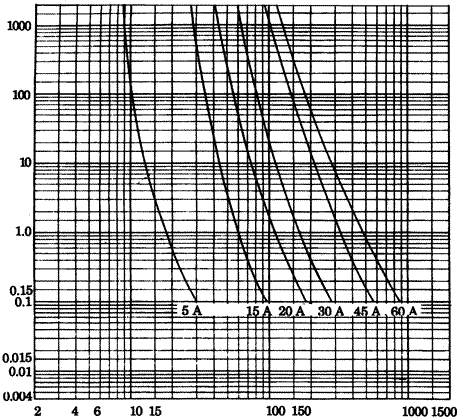Hi I know that in a normal house the single phase supply is rated at 100 amps max as far as I know there aren't any bigger than this but are there larger single phase supply's for commercial use?
Hi I know that in a normal house the single phase supply is rated at 100 amps max as far as I know there aren't any bigger than this but are there larger single phase supply's for commercial use?
I recently observed the following Kelly:
A ground floor shop with a three phase supply at floor level. A red link supplying a vertical earthed concentric cable running upwards to the flat above. In the flat is a single phase 100 Amp. cut out and metering. The flat has six off peak storage heaters, no gas. The on peak consumer unit supplies a shower, ring final circuit, immersion heater and cooker plus lighting.
I can imagine that on occasions the main fuse supplying more than 100 Amps. If just the six storage heaters turn on at once the total load could be about 80 Amps. The immersion heater will also come on at off peak times (including afternoon boost times) and its load will be added to the storage heater load. . The main fuse has not blown, and all the cables are in good condition with no signs of overheating or damage. The main tails are 35mm2 to a D.P. Henley block from which they reduce down in size.
Z.
Indeed, a 100A fuse is a fuse for a 100 amp load 24/7, much as a 13A fuse is a fuse for a 3kW load. Given that it must never melt at this current, it is quite capable of carrying considerably more for short periods. And house cut-out fuses are deliberately made 'slow blow'.
This set of curves is for BS1361 fuses, as seen in some cut-outs, although it does not include a line for 100 devices. (time in seconds vertical, current in amps horizontal).

Note that even the 60A one will pass 100A for more something like 20 minutes and 200A for a minute (the top of the graph is 1000 seconds, between 15 and 20 mins. )
Now this is fine, because the main function of the cut-out fuses is to protect the cables in the street, and perhaps the meter tails, and these too heat up over a long timescale, tens of minutes to hours.
It may not be great design, but it is certainly possible to have loads that draw rather more than 100A on a 100A supply, so long as they only do so until the oven thermostat trips off, or for a ten minute shower. ;-)
However, loads that really are on all day - like an electric car charging - are a totally different proposition and eat into this margin and are a far more serious consideration both for the house wiring, and that in the street.
After all, the typical 500KVA substation feeding up to 70 houses per phase, fused with perhaps a one 800A or pair of 400 A fuses per phase depending if it is in the middle of a street or at one end is also sized based on having plenty of time to cool off between short duration overloads.
But in short, the larger supply fuse is not always needed, but sometimes a better understanding of the type of load.
Mike
Indeed, a 100A fuse is a fuse for a 100 amp load 24/7, much as a 13A fuse is a fuse for a 3kW load. Given that it must never melt at this current, it is quite capable of carrying considerably more for short periods. And house cut-out fuses are deliberately made 'slow blow'.
This set of curves is for BS1361 fuses, as seen in some cut-outs, although it does not include a line for 100 devices. (time in seconds vertical, current in amps horizontal).

Note that even the 60A one will pass 100A for more something like 20 minutes and 200A for a minute (the top of the graph is 1000 seconds, between 15 and 20 mins. )
Now this is fine, because the main function of the cut-out fuses is to protect the cables in the street, and perhaps the meter tails, and these too heat up over a long timescale, tens of minutes to hours.
It may not be great design, but it is certainly possible to have loads that draw rather more than 100A on a 100A supply, so long as they only do so until the oven thermostat trips off, or for a ten minute shower. ;-)
However, loads that really are on all day - like an electric car charging - are a totally different proposition and eat into this margin and are a far more serious consideration both for the house wiring, and that in the street.
After all, the typical 500KVA substation feeding up to 70 houses per phase, fused with perhaps a one 800A or pair of 400 A fuses per phase depending if it is in the middle of a street or at one end is also sized based on having plenty of time to cool off between short duration overloads.
But in short, the larger supply fuse is not always needed, but sometimes a better understanding of the type of load.
Mike
We're about to take you to the IET registration website. Don't worry though, you'll be sent straight back to the community after completing the registration.
Continue to the IET registration site